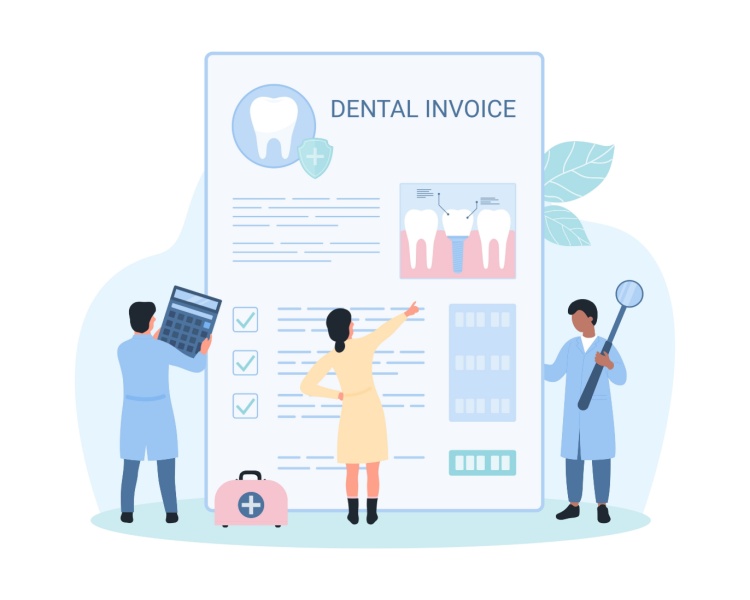
What You Need to Know about the Canadian Dental Care Program (CDCP)
The Canadian Dental Care Program (CDCP) is available across Canada, offering coverage to many patients. However, there is some confusion about what it covers and who can use it. Let’s take a look and clear things up.
This article explains what you need to know about The Canadian Dental Care Program (CDCP), how it works, and how to apply.
Important to Know for New Patients
Patients must apply themselves
Patients have to figure out their eligibility for the CDCP. Dentists don’t have a checklist for benefits and information on who can use the program. Dental professionals and the public have the same information.
Patients need to visit the government CDCP website and review the information to determine if they are eligible. Once they confirm eligibility, they can show proof of coverage at the dental clinic, like how you would present proof of other insurance programs.
Patients are also responsible for going through the system and managing their coverage. Applying in advance and confirming your coverage helps you speed up the process and reduce the chances of issues later.
Completing the application process for the CDCP is fairly clear. Families apply through their provincial or territorial dental association or a local public health unit. You also need to provide other documents like proof of income, proof of address, and details about dependants.
You can refer to the CDCP’s Government of Canada website .
The CDCP is NOT the same as other insurance programs
The Canadian Dental Care Program (CDCP) is run by Sun Life and is like other insurance programs, but there are some differences. Dentists don’t have access to the details of someone’s coverage before providing care. Patients need to know their coverage and reimbursement details before visiting a clinic.
CDCP also doesn’t provide immediate coverage, so patients might have to pay a lot more money upfront. Privacy laws prevent the CDCP from sharing personal information with us, so if you aren’t sure about your coverage, we cannot speak to CDCP for you or get information directly from them.
Dental Clinics are not Obligated to Accept CDCP
Dental clinics are not required to accept the CDCP. The choice is up to the individual clinic. Because of confusion around how CDCP works, what it covers, and how payments are made, many clinics choose against accepting it. If you have CDCP coverage, check with the dental office if they accept CDCP before your appointment.
How much Dental Work does CDCP cover?
Dental insurance coverage isn’t universal. Insurance plans and policies have different fee guides and coverage maximums. The CDCP is no exception. Some people might think a service is fully covered, like how doctor’s appointments are covered by OHIP, but many other factors complicate budgeting.
A person could think they have 50% coverage based on outdated fee guides, but they may actually only have 25% or even less coverage. This can leave patients surprised and on the hook for the remaining amount.
Another common concern is reimbursement. Dentists and patients are both unsure about the details of CDCP reimbursements. The CDCP hasn’t clearly communicated how and the time it takes to reimburse patients after they submit a claim.
Patients might wait up to several months for an answer, which can complicate financial planning. Until they streamline the program and more clear information is available, many dental clinics will continue to refuse CDCP.
At Kids Dental Group, we mainly provide paediatric dental services and only accept CDCP as secondary to other insurance. If a patient has primary insurance that covers the main costs, we may accept CDCP to cover the rest. It is a small but significant change that we hope can help more families access affordable dental care for their children.
What if I need Specialized Dental Work or Orthodontics?
The CDCP covers common dental services like exams, cleaning, x-rays, and fillings and extractions. For families with smaller budgets, this means more regular dental care. This is a great outcome because delaying treatment can lead to more severe dental issues.
The Canadian Dental Care Program (CDCP) does not cover orthodontics; it only covers regular dentistry. There are currently no open programs like the CDCP for individuals to apply for orthodontic coverage.
These programs specific application and individuals usually need to be registered and receiving support from ODSP or CAF before they can receive dental coverage. Unfortunately, for the average family needing orthodontic coverage, there aren’t many open programs or other options at this time.
Who Should Apply for CDCP?
Eligibility for CDCP depends on your household income and number of dependents. The program is meant to assist families that don’t have enough coverage through employment benefits or private insurance. Families can take advantage of CDCP to maintain their children’s dental health.
Conclusion
The Canadian Dental Care Program (CDCP) offers support for many Canadian families. It makes dental health easier to get, especially for people from lower-income backgrounds.
Unfortunately, there are still issues. People will have to do lots of research before they get dental care, but anyone who is interested should still apply. If you are looking into the program, just know that being prepared is the best way to take advantage of the program.
As paediatric dentists, we see how this program has a positive impact on children’s dental care. It also provides opportunities to many Canadian families.
Educating families on the importance of dental health and preventing dental diseases through programs like the CDCP can drastically improve the health and quality of life for our children. By providing access to essential dental services, the CDCP plays a crucial role in creating a healthier future generation.
If you have any questions, feel free to contact us.
